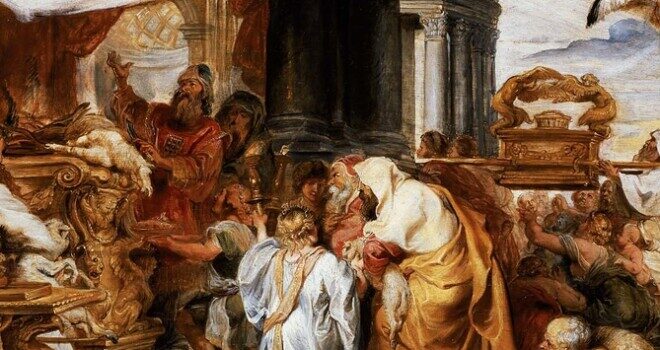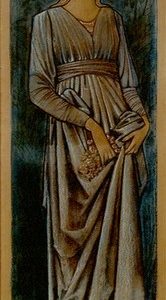This weekend we celebrate the Solemnity of The Most Holy Body and Blood of Christ. It also marks the end of a two-year Eucharistic revival within the Catholic Church in America. This Eucharistic revival was principally initiated to draw the Catholic faithful into a greater awareness of the Real Presence of Jesus Christ in the Eucharist. Not a symbol or a representation of Christ but rather His very-Self made present in His Body, Blood, Soul and Divinity!
Sadly, many Catholics don’t believe in this important Church teaching, despite the fact that the Catholic Church has always held and will always hold to this teaching, which is so central to our faith—a teaching that has been handed down to us by the Apostles, who themselves received it directly from Christ our Lord.
The Solemnity of The Most Holy Body and Blood of Christ is celebrated annually by the Church to enliven our belief in and worship of this Sacrament and to impart to the faithful a greater understanding of Jesus’ Real Presence in the Eucharist.
Our first reading at this year’s Solemnity celebration comes from the Book of Exodus. It relates to the ratification of the Mosaic covenant between the Lord and His people, the Israelites. This reading focuses on four distinct actions taken by the Israelites at Sinai during the ratification process of this covenant.
The first of these actions was the acceptance by the Israelites of all the ordinances of the Lord that Moses had conveyed to them. The second of these actions was the erection of an altar and twelve pillars symbolizing the presence of God and the twelve tribes of Israel, who were the parties to this covenant.
The third action involved the Israelites sacrificing young bulls as a peace offering to the Lord. Finally, the fourth action involved the sprinkling of some of the bulls’ blood on the Israelites while Moses said, “This is the blood of the covenant that the Lord has made with you in accordance with all these words of His.” This sprinkling of blood was the visible sign that God chose to have His people ratify this covenant. Their offspring would become the inheritors of this covenant.
Sadly, throughout the centuries, the Israelites would knowingly and repeatedly break this covenant with the Lord.
In chapter 31 of the Book of the Prophet Jeremiah, God revealed to the prophet that, despite their ancestors’ unfaithfulness to the Mosaic covenant, He would make a new and eternal covenant with His people.
This new covenant which the Lord foretold would be given “after those days” would “place my law within them, and I will write it upon their hearts; I will be their God, and they shall be my people…all shall know Me, for I will forgive their iniquity and no longer remember their sin.”
But how would God choose to fulfill this new and eternal covenant and, just as importantly, how would He elect to have His people ratify their acceptance of and participation in it?
The answer to the first part of this question is by sending His Only Begotten Son, who would become incarnate. By virtue of His Incarnation, Christ could offer His Body as a sacrifice pleasing to God His Father, in atonement for our sins. This was not merely an animal’s body but that of Christ’s fullness of humanity and divinity! Thus, His sacrifice warrants infinite merit for and on behalf of His disciples’ salvation. And thus His Blood was poured forth upon the cross.
But in what manner were Christ’s disciples to ratify their acceptance of and participation in this new and eternal covenant? The answer is by eating his Body and drinking His Blood!
Now let us compare the four actions that comprised the Israelites’ ratification of the Mosaic covenant which I have outlined above, with the corresponding actions taken by Christ’s disciples in ratifying their acceptance of the new and eternal covenant.
Recall that the first of these actions was the acceptance by the Israelites of all the ordinances of the Lord that Moses had conveyed to them. In a like manner, participants in this new covenant must first be baptized and become full members of Christ’s Body, His Church, by accepting all of her teachings which have come down to us from the Apostles.
The second action was to erect an altar and twelve pillars signifying the participants of the Mosaic covenant. Likewise, in the new covenant an altar is erected, and in lieu of twelve pillars that signify the twelve tribes of Israel, our spiritual and physical presence is necessary and provided for in the church. Thus both parties to this new covenant are present.
The third action was the sacrifice of bulls as a peace offering to the Lord. Let me be clear, no amount of animal blood can atone for sins then or now. This action in the Mosaic covenant was to imbue His people in the knowledge that sacrifice, by the shedding of blood, was in fact necessary for the atonement of sins.
This animal sacrifice was a foreshadowing of the new and eternal covenant that would be fulfilled by Christ’s sacrifice on Calvary, thus enabling the promise made by God, “for I will forgive their iniquity and no longer remember their sin,” to come to fruition.
Finally, the fourth action involved the sprinkling of some of the bulls’ blood on the Israelites. In our Gospel reading at this year’s Solemnity celebration, Jesus is quoted as saying, “This is my blood of the covenant, which will be shed for many.” In the first part of this phrase, Jesus uses the very same words spoken by Moses when sprinkling the Israelites with blood (though Jesus personalizes it by adding the word “my” before “blood“). He is conveying to His disciples what He is about to do in order for the fulfillment of the new and eternal covenant to take place. By further instructing His disciples “to do this in remembrance of me,” Jesus is conveying to His disciples how their ratification of this new and eternal covenant is to occur.
In the new covenant, blood is not sprinkled upon us. Rather, we consume Christ’s Body and Blood—not a symbol or a representation of Christ, but His very-Self made present in His Body, Blood, Soul and Divinity. For nothing can so fortify us spiritually for our journey through life as His disciples than His Precious Body and Blood!
Rubens, P. P. (1626). The Sacrifice of the Old Covenant. [oil on panel]. Retrieved from MFA Boston.










